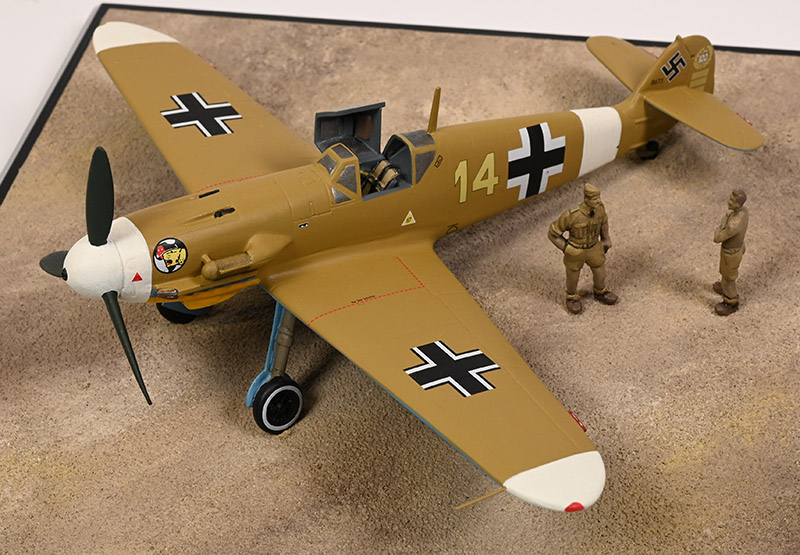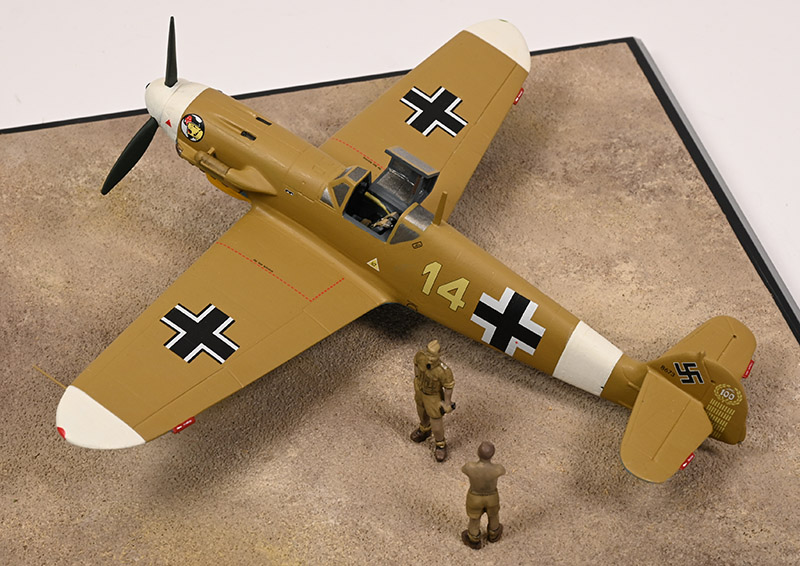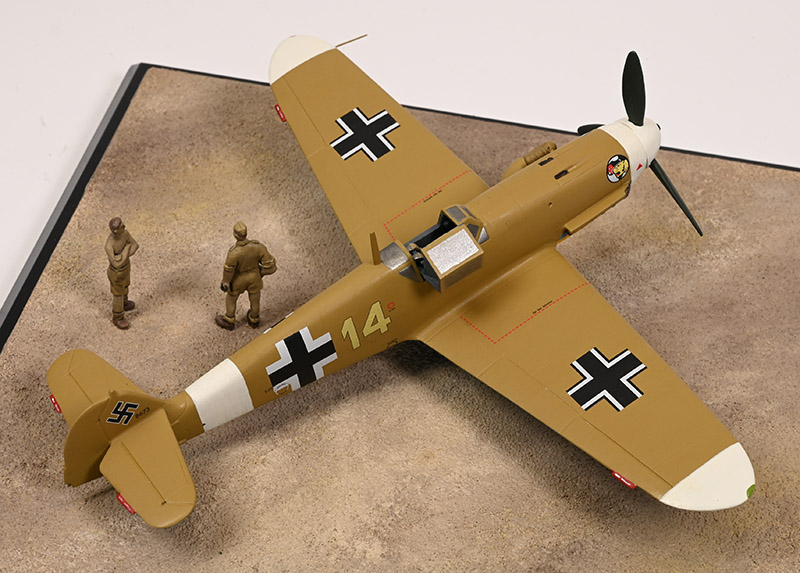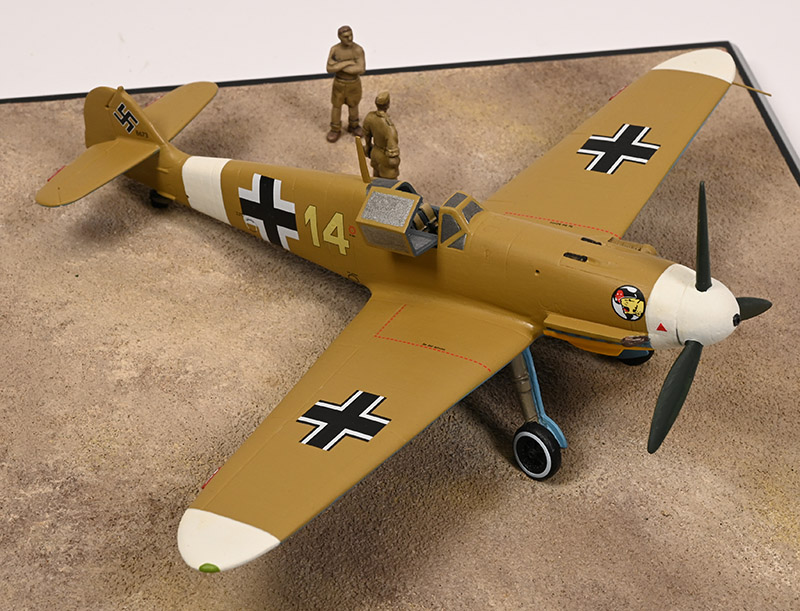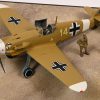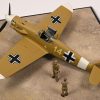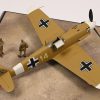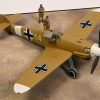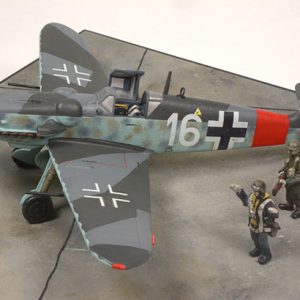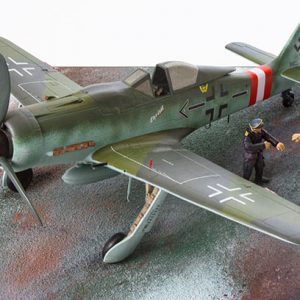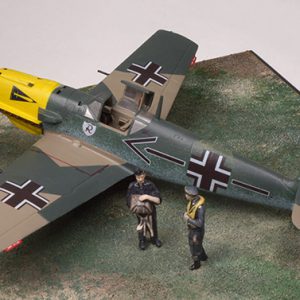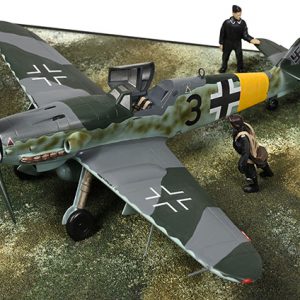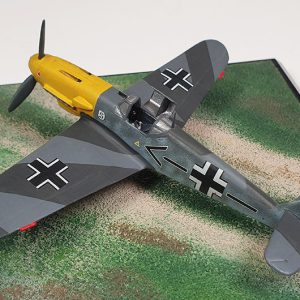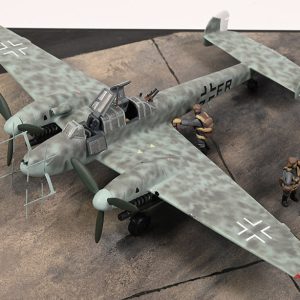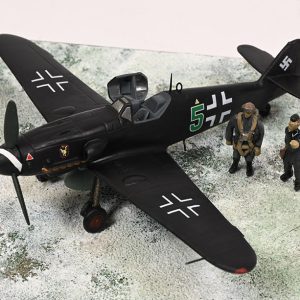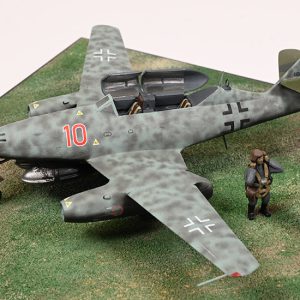Messerschmitt Bf 109 F-4 Werknummer 8673 ‘Yellow 14’
Jagdgeschwader JG 3. /27, Hauptmann Hans-Joachim Marseille, September 1942
The Messerschmitt Bf 109 is the most produced fighter aircraft in history, with a total of 33,984 airframes built between 1936 and 1945. The Bf 109 F series introduced a third change in the type’s appearance. The F series or “Friedrich” had rounded wing tips, a redesigned longer cowling to accommodate more powerful DB 601 engines, a rounded spinner, and an absence of tail plane bracing struts. This increased the speed and manoeuvrability of the Bf 109 quite considerably. When the Bf 109 F appeared at the start of 1941, it proved itself to be more than equal to the Spitfire Mk V. The only complaint most pilots had about the their new Friedrich’s was that it was under-armed. Between May 1941 and May 1942, 1,841 Bf 109 F-4 airframes were produced. The F-4 variant was powered by the DB 601 E-1 engine. It was armed with one 20mm MG 151 cannon firing through the engine and two MG 17 machine guns in the nose cowling. The F-4 was the most numerous sub-type of the 109 F series, and remained in service until 1943. The Erla factory produced 576 F-4/Trop variants specially for service in the Mediterranean theatre of war. Special tropical features included sand filters on the supercharger air intakes, hydraulic seals and protective covers. In addition, holders for umbrellas offered some sun protection for pilots when on the ground. Planes were also equipped with a special desert emergency kit, including a gun and a supply of food and water. The Bf 109 F arrived in North Africa the autumn of 1941. The F model further increased the advantage held by the Germans on a fighter to fighter basis. However, fuel shortages began to plague the Luftwaffe, reducing its effectiveness. Worse still, the German pilots were nearly always fighting against larger numbers of enemy aircraft. The year 1942 saw the desert war turn permanently against the Germans. That said it had begun well. Rommel’s attacks in May had forced the British to retreat almost to Egypt, stopping at El Alamein. However, the air battles associated with Rommel’s final advance saw the first Spitfire Mk Vs appear in North Africa. The Mk V was a far more potent foe than the Hurricane and P-40 with which the Luftwaffe had contended with up until this point in time. Hans-Joachim Marseille flew Bf 109F-4/Trop W.Nr. 8673 from 24th August, 1942 to 25th September 25th, 1942. It was his third and last Friedrich coded Yellow 14. Marseille’s scored his 150th victory on 15th September 1942 whilst flying this aircraft. He was credited with seven P-40s in 11 minutes on that day alone. However records of the individual Allied squadrons involved: 3 Squadron RAAF, 112 Squadron RAF, 250 Squadron RAF and 450 Squadron RAAF show that their total losses to enemy action that day were only five P-40s. Marseille’s tactic of diving into opposing formations often found him under fire from all directions, resulting in his aircraft frequently being damaged beyond repair. Marseille persisted and created a unique self-training programme for himself, both physical and tactical, which resulted in outstanding situational awareness, marksmanship and confident control of his Bf 109. He developed a unique tactic that opted for high angle deflection shooting at the target’s front and sides, instead of the common method of chasing an aircraft and shooting at it directly from behind. Marseille often practiced these tactics on the way back from missions with his comrades and became known as a master of deflection shooting. On 30th September, 1942 whilst piloting a new and uncoded Bf 109G-2/Trop, his cockpit filled with smoke and he was forced to bail out. During his escape, Marseille hit the tailplane of his aircraft and was killed. The Luftwaffe’s Star of Africa was no more. In his wartime career Marseille scored 158 aerial victories. After his death, W.Nr. 8673, served with 1. / SG 2 and was lost after being hit by flak south of El Alamein on 22nd October, 1942. The tail rudder of W.Nr. 8673, Yellow 14, now bearing the 158 victory marks it never wore in combat, is on display at the Luftwaffenmuseum der Bundeswehr in Berlin Gatow. It had initially been given to Marseille’s family as a gift from Hermann Göring and was later donated to the museum. Bf 109 F-4/Trop W.Nr. 8673 is painted RLM 79 Sandgelb on its upper surfaces with RLM 78 Hellblau on the undersides. The aircraft sports the white wing tips and fuselage band denoting the Mediterranean theatre of war, with JG 27’s unit badge on both sides of the nose.


